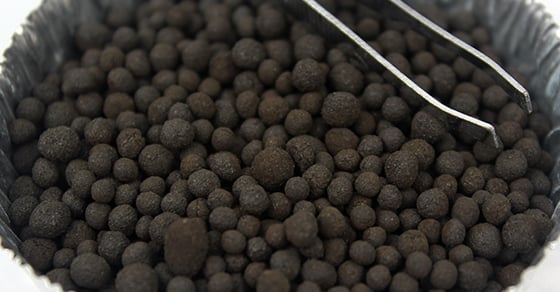Agglomeration labs are regularly conducted at FEECO International, as our Process Experts test materials for feasibility, optimize current processing methods, and help customers create their ideal product. And while we’ve worked with hundreds of materials over the years, one that we frequently see in the FEECO Innovation Center is iron ore.
Iron ore is a central mineral used in the steel industry. Despite its widespread use, testing is often done to create a valuable end-product that meets industry standards. Factors like mesh size vary from 1/8”-3/8,” and binder selection varies per each customer need as well.
This article takes an in-depth look at iron ore agglomeration in the FEECO Innovation Center, emphasizing the benefits of agglomeration, processing methods, and challenges associated with the unique nuances of the material itself.
Why Agglomerate Iron Ore?
Generally speaking, customers looking to process iron ore come to the FEECO Innovation Center for three primary reasons:
- To eliminate dust issues associated with iron ore fines. This is especially beneficial to the steel recovery industry as the dust can be pelletized, and then sold back to companies within the steel industry.
- To create a more easily handled and transported end-product. Dusty ore fines can be a nuisance to work with, but pelletization ensures dust-free product handling and thus less product lost.
- To create a high performing end-product. Heat transfer is more efficient in a solid than a powder. Pellets around 4-10 mesh provide a happy medium between iron ore fines (crushed/ground iron ore) and a chunk of iron (mined) for use in a blast furnace.
Pelletization offers an effective solution to the items noted above. The ‘recipe’ for successful pelletization, however, is determined through testing.
Iron Ore Agglomeration Tests
All lab tests are designed around the distinct qualities of each material, and thus the sample’s characteristics should be acknowledged prior to testing. Overall, iron ore is:
- Heavy.
- Abrasive.
- Dusty / easily wind-blown.
- Varying in composition (some samples contain more clay than others).
After evaluating the nuances of the sample, and learning more about the customer’s agglomeration goals, FEECO’s Process Experts begin the test work with the following equipment:
1) Pre-conditioning in a pin mixer or paddle mixer. The paddle mixer is typically selected over the pin mixer, because of its ability to handle abrasive materials like iron ore.
Paddle mixers use dual shafts with attached paddles to create a kneading and folding over motion. This process thoroughly mixes iron ore with a binder, preparing it for agglomeration.
Rotary drum granulators are another pre-conditioning option. The material and binder mix as a result of the drum’s rotation.
Furthermore, binder may serve as a beneficial additive to the pelletized product, depending on its anticipated application and the binder selected. Iron pellets can be used in the fertilizer industry, for example, and thus certain binders may not only help achieve agglomeration, but may also provide nutrients to crops when applied to standard fields.
2) Pelletizing on a disc pelletizer. The conditioned material enters the pan, and as the pan rotates, the iron ore tumbles against itself, growing in size. Once the pellets reach their desired size, they exit the pan and proceed to drying.
3) Drying in a rotary drum dryer. The dryer removes the specified amount of moisture from the pellets in order to meet end- product requirements. The rotation of the drum also imparts a tumbling action on the pellets, further polishing and rounding them.
In addition, various pieces of material handling equipment, such as bucket elevators and conveyors, are also used throughout the lab tests, to transport the material from one piece of equipment to the next.
The Importance of Testing
The importance of testing iron ore in a lab setting cannot be emphasized enough. It is in the lab where process variables such as binder, binder feed rate, and RPM among other items can be fine-tuned to produce agglomerates that meet a customer’s precise specifications. And because iron ore varies from one sample to the next, so too does the process configuration.
The FEECO Innovation Center is equipped to suit small batch tests on a single piece of equipment, as well as a continuous process loop to create the ideal iron ore agglomeration process. Items such as attrition, crush strength, compression, and bulk density are also measured through various stages of testing to, again, create the anticipated end-product.
Are you interested in testing your iron ore sample in the Innovation Center? Contact a FEECO expert today!

